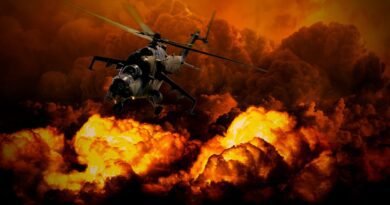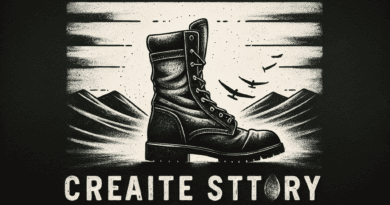Vietnam War Service
In this article, “Vietnam War Service,” you will uncover a trove of information about the historical significance and impact of the Vietnam War. From the brave soldiers who served during the conflict to the various factors that shaped this tumultuous period, this article aims to provide you with a comprehensive understanding of Vietnam’s war service. Whether you are a history enthusiast or simply seeking to broaden your knowledge, join us as we delve into this pivotal chapter in world history.
The Origin of the Vietnam War

The colonial backdrop of Vietnam
Vietnam’s history of foreign colonization is an essential piece of the puzzle when it comes to understanding the origin of the Vietnam War. From the late 19th century, Vietnam was under French colonization, along with other French Indochina territories such as Laos and Cambodia. The French exploited Vietnam’s resources and imposed their culture and language on the Vietnamese people. This oppressive rule created resentment and resistance among the Vietnamese population, setting the stage for future conflicts.
Cold War dynamics
The context of the Cold War had a significant impact on the escalation of the Vietnam War. As the United States and Soviet Union engaged in a global power struggle, the ideology of containing communism became a crucial factor in shaping American foreign policy. Fearful of the spread of communism in Southeast Asia, the United States saw Vietnam as a battleground in the larger ideological conflict between capitalism and communism.
The rise of Ho Chi Minh and the Viet Minh
Ho Chi Minh, a Vietnamese nationalist and communist leader, played a pivotal role in the Vietnam War. Inspired by the Russian Revolution and driven by his desire to liberate Vietnam from foreign domination, Ho Chi Minh founded the Viet Minh, a nationalist and communist organization dedicated to achieving Vietnamese independence. The Viet Minh fought against Japanese occupation during World War II and continued their struggle for independence against the returning French colonial forces.
American involvement and escalation
Advisory role under President Eisenhower
During the presidency of Dwight D. Eisenhower, the United States began its involvement in Vietnam by providing military advice and financial aid to the French in their fight against the Viet Minh. The United States viewed the conflict as part of its broader policy to prevent the spread of communism.
Growing military presence in Kennedy administration
Under President John F. Kennedy’s administration, American involvement in Vietnam escalated. The number of military advisors and aid increased significantly, reflecting the United States’ increasing commitment to South Vietnam’s defense against the Viet Cong, a communist guerrilla force supported by North Vietnam.
Full scale war under President Johnson
It was during President Lyndon B. Johnson’s administration that the Vietnam War escalated into a full-scale war. Following the Gulf of Tonkin incident, in which American naval ships were allegedly attacked by North Vietnamese forces, the United States committed to a sustained bombing campaign and deployed ground troops to Vietnam. This marked a significant turning point in the conflict, as the United States became deeply embroiled in a costly and divisive war.
Major Battles and Operations of the War

The Tet Offensive
One of the most significant events of the Vietnam War was the Tet Offensive, launched by the North Vietnamese and Viet Cong forces during the lunar New Year holiday in 1968. The offensive shocked the United States and its allies, as it demonstrated the Viet Cong’s ability to mount coordinated attacks across South Vietnam. Although the offensive resulted in extensive casualties, it had a profound psychological impact on the American public, eroding support for the war.
Operation Rolling Thunder
Operation Rolling Thunder was an aerial bombing campaign conducted by the United States against North Vietnam between 1965 and 1968. Its objective was to destroy North Vietnamese infrastructure, disrupt supply routes, and demoralize the enemy. Despite the intensity of the campaign, it did not achieve its intended results and instead contributed to the growing opposition to the war.
The Battle of Khe Sanh
The Battle of Khe Sanh, which took place in early 1968, was one of the longest and bloodiest battles of the Vietnam War. The North Vietnamese besieged the U.S. Marine combat base at Khe Sanh for several months, testing American resolve and resources. Despite heavy losses suffered by the North Vietnamese, the battle ended inconclusively. It became a potent symbol of the challenges faced by American forces in Vietnam.
Easter Offensive
The Easter Offensive, launched by North Vietnam in 1972, aimed to strike a decisive blow against South Vietnam and reunite the country under communist rule. The North Vietnamese forces launched a massive conventional invasion, catching the South Vietnamese and their American allies off guard. Although the offensive was eventually repelled, it underscored the ongoing challenges and costs of the war.
The Role of the Draft and Military Service
Selective Service System
During the Vietnam War, the United States implemented a draft through the Selective Service System. This system randomly selected eligible young men to fulfill military service obligations. The draft played a significant role in supplying troops for the war effort.
Opposition to the draft
The draft sparked widespread opposition and protests throughout the United States. Many young Americans opposed the war and saw the draft as an unjust means of forcing them to participate in a conflict they did not support. Anti-war sentiment, fueled by the draft, grew rapidly and became a significant force in shaping public opinion.

The ‘Lottery’ system
To address concerns about the fairness of the draft, the United States implemented a lottery system in 1969. The system randomly assigned draft numbers to eligible men based on their birth dates. Those with low numbers faced a higher likelihood of being drafted. While the lottery system aimed to introduce fairness, it did little to quell opposition to the draft or dampen anti-war sentiment.
Impact on younger generations
The Vietnam War and the draft had a profound impact on younger generations in the United States. The war created a generational divide, as many young people actively resisted the draft and protested against the war. The conflict transformed countless lives, shaping political beliefs and social attitudes for years to come.
The Home Front
Growing opposition to the war
As the Vietnam War continued, opposition and dissent within the United States grew increasingly vocal and widespread. Students, activists, and other segments of society organized protests, demonstrations, and acts of civil disobedience. The anti-war movement, fueled by a mix of moral, political, and practical concerns, gained significant momentum and challenged the government’s policies and legitimacy.
Anti-war movement
The anti-war movement encompassed a wide range of individuals and organizations, from student activists to religious leaders to Vietnam veterans themselves. Mass demonstrations, such as the Moratorium to End the War in Vietnam, brought together hundreds of thousands of Americans, showcasing the strength and breadth of the movement. The anti-war movement had a significant impact on public opinion and influenced government decision-making.
Impact on American society
The Vietnam War had a profound impact on American society, both during and after the conflict. The deep divisions and polarization caused by the war touched every aspect of society, including politics, culture, and social norms. The war challenged traditional institutions and values, igniting debates about the role of government, individual rights, and the pursuit of national interests.
Government propaganda efforts
Throughout the Vietnam War, the U.S. government launched various propaganda campaigns aimed at shaping public opinion and justifying its involvement in Vietnam. These efforts included disseminating information through various media outlets, promoting patriotism, and portraying the war as a necessary fight against communism. However, these propaganda efforts often clashed with the grim reality of the war, leading to growing skepticism among the American public.
Military Tactics and Innovations

Guerrilla warfare
The Vietnam War was characterized by the extensive use of guerrilla warfare tactics employed by the Viet Cong and North Vietnamese forces. These tactics involved hit-and-run attacks, ambushes, and blending in with the civilian population. Guerrilla warfare proved challenging for the technologically advanced American military, as it rendered traditional combat strategies less effective.
Air warfare and bombing
The United States relied heavily on air warfare and bombing campaigns to weaken North Vietnam’s military capabilities and disrupt supply lines. The use of aerial bombardment, including the controversial tactic of carpet bombing, resulted in massive destruction and civilian casualties. However, despite the overwhelming firepower, the United States faced significant challenges in achieving its objectives.
Chemical warfare – Agent Orange and napalm
Perhaps one of the most controversial aspects of the Vietnam War was the use of chemical warfare. The United States employed various chemical agents, such as Agent Orange and napalm, to destroy vegetation and expose enemy hiding spots. The long-term effects of these chemicals on both the environment and human health, both during the war and in subsequent generations, have been devastating.
The Ho Chi Minh trail
The Ho Chi Minh trail was a vast network of logistical supply routes used by the North Vietnamese to transport troops, supplies, and weapons from North Vietnam to South Vietnam through neighboring Laos and Cambodia. The trail proved critical to the North Vietnamese war effort, as it allowed them to maintain their fighting capacity despite intense American bombing campaigns. Efforts to interdict or block the Ho Chi Minh trail were largely unsuccessful and only highlighted the challenges faced by American forces.
International Reactions and Involvements
Role of China and the Soviet Union
The Vietnam War had significant international ramifications, with China and the Soviet Union playing key roles. China provided military and political support to North Vietnam, while the Soviet Union supplied weaponry and economic aid. Their involvement in the conflict further heightened tensions between the superpowers and exacerbated the global Cold War dynamics.
Reaction from other Southeast Asian nations
The Vietnam War also influenced other nations in Southeast Asia, particularly those with communist movements or existing internal conflicts. Countries like Laos and Cambodia became embroiled in the war as American forces targeted enemy sanctuaries within their borders. These regional dynamics further complicated the already complex web of alliances and conflicts in the region.

International anti-war sentiment
The Vietnam War sparked widespread anti-war sentiment and activism beyond American borders. In many countries, people took to the streets to express their opposition to the conflict and call for peace. International anti-war movements and protests showcased a global rejection of both the Vietnam War and U.S. foreign policy.
The End of the Conflict and American Withdrawal
Vietnamization under President Nixon
Facing mounting public pressure and a costly war, President Richard Nixon initiated a policy known as Vietnamization. The strategy aimed to gradually transfer the burden of the war to the South Vietnamese forces while gradually withdrawing American troops. However, the policy of Vietnamization did not bring an immediate end to the conflict and instead prolonged the war for several years.
Paris Peace Accords
In 1973, peace negotiations led to the signing of the Paris Peace Accords. The agreement sought to establish a ceasefire between North and South Vietnam, ensure the withdrawal of American forces, and lay the groundwork for a political settlement. While the Paris Peace Accords temporarily halted direct American involvement, the agreement did not bring lasting peace to Vietnam.
Fall of Saigon
Two years after the Paris Peace Accords, North Vietnamese forces launched a major offensive that culminated in the fall of Saigon, South Vietnam’s capital, in 1975. This marked the end of the war and the reunification of Vietnam under communist rule. The fall of Saigon also symbolized the failure of American intervention and the high cost of the war in both human lives and resources.
The cost of war
The Vietnam War took a tremendous toll on both the United States and Vietnam. Millions of lives were lost, and countless more were forever impacted by the physical, emotional, and social scars of the war. The financial cost of the war was also staggering, with the United States spending billions of dollars on military operations and aid.
Post-war Developments
Political Changes in Vietnam
Following the end of the Vietnam War, Vietnam experienced significant political changes. The country was reunified under communist rule, with Hanoi serving as the capital. The socialist government embarked on a path of economic and political reforms, although Vietnam remained politically isolated from much of the international community for many years.
Reeducation camps
After the war, the Vietnamese government established reeducation camps with the aim of rehabilitating individuals associated with the former South Vietnamese government or deemed politically unreliable. The camps, however, were notorious for human rights abuses, with detainees subjected to forced labor, harsh living conditions, and ideological indoctrination.
Vietnam Veterans Memorial
In Washington, D.C., the Vietnam Veterans Memorial was built to honor and remember those who served and died in the war. The memorial, a black, polished granite wall bearing the names of over 58,000 service members, serves as a solemn reminder of the sacrifice made by so many during the conflict.
War legacy and cultural impact
The Vietnam War left a lasting legacy on society, culture, and collective memory. It sparked a reevaluation of American military interventions and shaped public attitudes towards war. The war’s impact extended beyond the battlefield and influenced popular culture, literature, art, and film, with works like “Apocalypse Now” and “Platoon” becoming icons of the Vietnam War in the collective consciousness.
Media and the Vietnam War
Role of television and print media
The Vietnam War was the first conflict to be extensively covered by television and print media. Journalists reported live from the front lines, bringing the war directly into people’s living rooms. This unprecedented level of access and the visceral imagery presented to the public had a profound impact on shaping public opinion and challenging government narratives about the war.
War coverage impact on public opinion
The graphic and sometimes shocking images broadcasted on television had a significant effect on public opinion. The stark contrast between the government’s optimistic pronouncements and the brutal reality of the war eroded the public’s trust in official statements. The media’s critical coverage of the war contributed to growing opposition and skepticism among the American population.
Memorable images and their impact
Numerous photographs captured during the Vietnam War became iconic symbols of the conflict. The image of a young girl running naked and burned after a napalm attack, the execution of a Viet Cong prisoner on a Saigon street, and the shocking image of a South Vietnamese officer executing a captured Viet Cong suspect at point-blank range remain etched in people’s minds, serving as powerful reminders of the horrors of war.
War correspondents and their contribution
War correspondents played a vital role in reporting on the Vietnam War. Journalists like David Halberstam, Neil Sheehan, and Peter Arnett risked their lives to provide first-hand accounts of the conflict. Their reporting brought attention to the human cost of the war, challenged official narratives, and helped shape the public’s understanding of the war.
In conclusion, the Vietnam War was a complex and multifaceted conflict that evolved over decades. The roots of the war can be traced back to Vietnam’s colonial history and the Cold War dynamics that shaped international relations. American involvement escalated gradually, eventually culminating in a full-scale war. The conflict was characterized by major battles and operations, the draft and military service, growing opposition on the home front, and various military tactics and innovations. The Vietnam War had significant international reactions and involvements and ultimately came to an end with the fall of Saigon and the reunification of Vietnam. The post-war period brought political changes, the establishment of reeducation camps, and efforts to memorialize and reckon with the war’s legacy. The media played a crucial role in shaping public opinion and challenging government narratives about the war. The Vietnam War had profound and lasting impacts on the United States, Vietnam, and the world at large.



